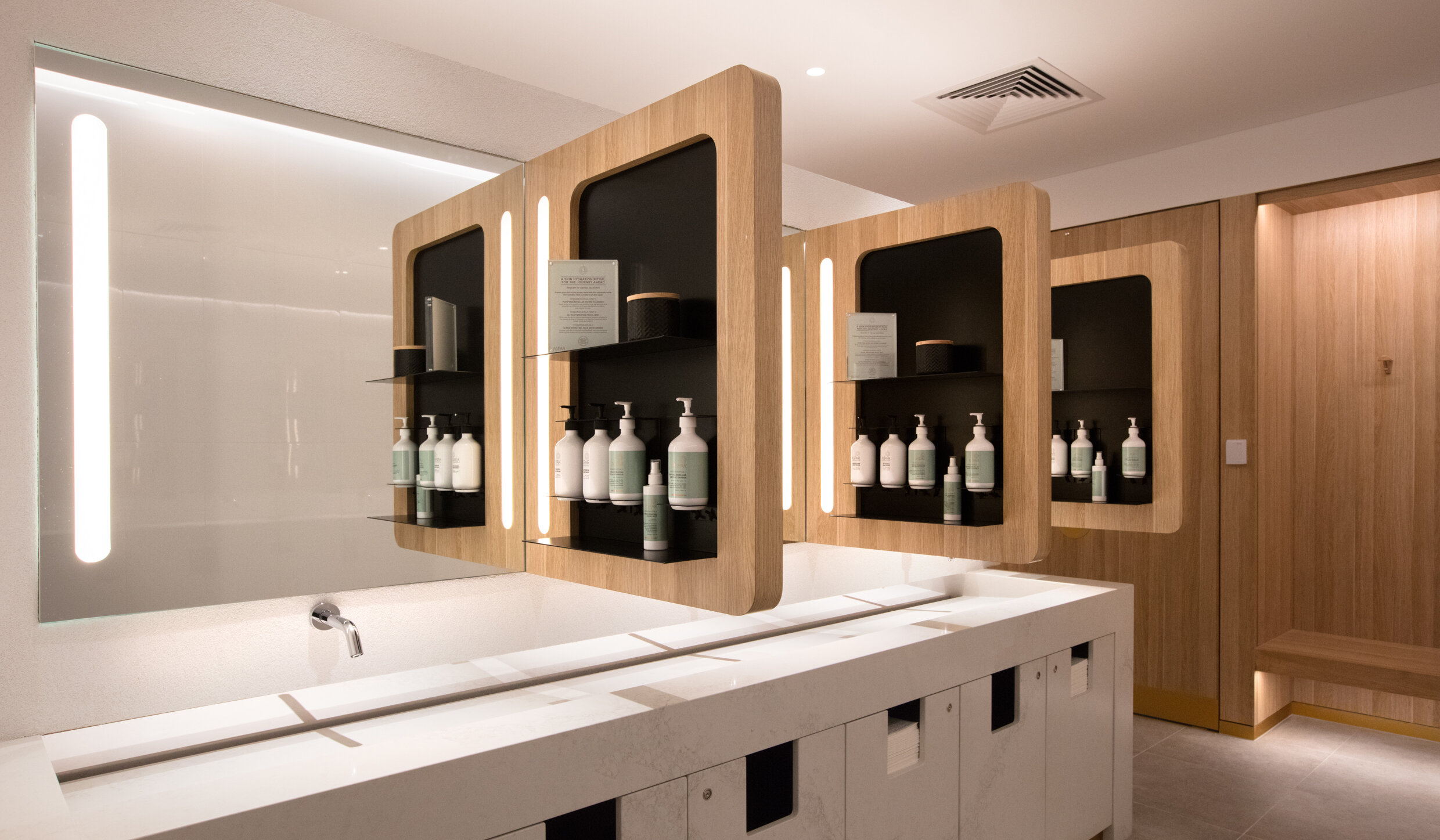It’s Time To Overhaul Long Haul Travel & Refocus On Wellness
Singapore’s Changi Airport is like a giant, grand public garden, each terminal hosting its own connection to nature to help ground travelers, many headed long-haul. Here, you can find everything from a cactus to a lily and orchid garden, there’s even a sunflower-packed rooftop. This is one of the biggest, and most beautiful, examples of how airports can better foster wellness for travelers today. Lounges will play a big part, too.
L
ong haul travel is waking up after long being dormant. In the past week, the Lufthansa First Class Terminal in Frankfurt re-opened, and British Airways re-opened the Concorde Lounges with some new polish. Both are hyper-premium offerings catering to the brand’s highest-spending passengers. But, in the span of them being closed, I’d venture to say that the long-haul business has changed immensely, and there are some new imperatives that need to come front and center for consumers.
To give a bit of context: long haul business and first travel and the corresponding lounges have been all about catering to travelers' egos. They were lavish places, with brand name champagne, heavy food, and names like the “Admirals Club” or the “HON Senator Lounge,” making the male business traveler feel important. Today, this not only feels dated, but totally out of touch with modernity.
Now, amidst and post the pandemic, I’d venture to say there’s going to be a sea of change in long-haul travel on a few different levels.
For one, with the rise of video conferencing and CFO’s riding a few years of heavily reduced T&E budgets, those freewheeling $6k tickets from New York to London on BA won’t flow forth quite as easily. But to be clear, I don’t think business travel is doomed forever. There is a huge amount of value in in-person meetings, off-sites, and closing dinners, but I don’t think the drop-of-a-hat travel for something that could have been a Zoom will be as forthcoming going forward.
Second, and perhaps most importantly, I think that we’re going to start seeing long-haul travel for what it is — an endurance event that messes with your sleep, dehydrates you, and takes a lot out of the system. I’ve been doing 250,000 miles a year for the past 15 years and this year, I started using an Oura ring which measures sleep cycles. It was ghastly to witness what one Emirates long-haul flight from LAX to DXB did to my sleep, recovery, and overall wellness. Formerly globe-trotting executives were slowly burning candles at both ends, while also availing themselves of the luxuries afforded by premium products — like decadent food, lots of booze and other indulgences. It is a combination that is just unsustainable.
The Qantas Lounge, Perth. Meditation and yoga room.
The Qantas Lounge, Perth. Luxury bathrooms provide the space to recover and relax.
So what’s next, then? I think we’ll see the premium end of the travel industry better accommodate long haul-travelers and these ‘endurance athletes’ who do it often. Now, with people prioritizing sleep, recovery wellness and restoration while being grounded the last year and a half, the airlines will follow suit with their premium offerings.
Now, I’m sure there will be always trappings of luxury when it comes to food and beverage, but I’d venture to say the high-end programs of top airlines will look much different in the next five years — catering more towards the rise of health-conscious and female business travelers, new ways of eating, and the latest science on light therapy, hydration and more.
One example that is setting the standard for the industry is the Qantas lounge in Perth. Pre-pandemic, this lounge already featured spaces to stretch out with some yoga or sit quietly for a few minutes of meditation. Onboard, there is also thought given to digestion and menu design, even going as far as studying how protein-rich ingredients in evening meals can have higher levels of tryptophan, an amino acid that promotes sleep hormones.
More recently, a brand that is no stranger to surfing the zeitgeist, Virgin Atlantic announced a Peloton partnership in their Upper Class lounges combined with relaxation and mediation spaces. The brand has also prioritized more non-alcoholic options at the bar, as well as healthier vegetarian and vegan options.
The way I see it, the over the top-glory days of decadent, long-haul travel may be going the ways of the Conde Nast expense account. But the future looks optimistic — more mindful, health-focused, and recognizing long-haul for what it is: highly draining, stressful on the body, and in need of thoughtful counterbalancing.
Cathay Pacific Hong Kong Lounge. A good soak can fix a lot, can’t it?
Alongside a fully-stocked regular bar, Cathay Pacific Hong Kong lounge, The Pier, has a tea bar.





